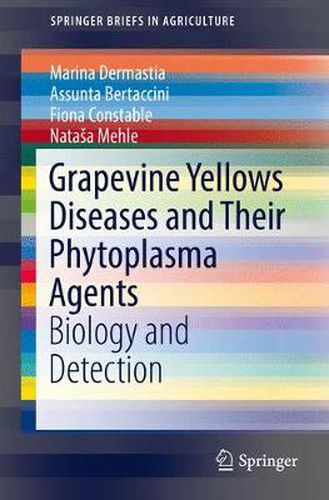Readings Newsletter
Become a Readings Member to make your shopping experience even easier.
Sign in or sign up for free!
You’re not far away from qualifying for FREE standard shipping within Australia
You’ve qualified for FREE standard shipping within Australia
The cart is loading…






This work is to compile our current knowledge on GY phytoplasma biology at the genomic, transcriptomics, proteomics and metabolomics level, as well as to summarize the approaches for their detection.Phytoplasma are the most poorly characterized plant pathogenic bacteria from the Mollicutes class. In recent years new biostatistics and bioinformatics approaches have improved our understanding of their biology and interactions with host grapevines and a great improvement has been made toward their molecular detection, both in laboratories and on-site. They have a broad range of plant hosts among the monocots and dicots, and diseases of many important crops are associated with these pathogens. At least ten taxonomically unrelated phytoplasmas, one of them a quarantine pest in Europe, have been associated with grapevine yellows diseases (GY), which have great economic impact on viticulture worldwide.
$9.00 standard shipping within Australia
FREE standard shipping within Australia for orders over $100.00
Express & International shipping calculated at checkout
This work is to compile our current knowledge on GY phytoplasma biology at the genomic, transcriptomics, proteomics and metabolomics level, as well as to summarize the approaches for their detection.Phytoplasma are the most poorly characterized plant pathogenic bacteria from the Mollicutes class. In recent years new biostatistics and bioinformatics approaches have improved our understanding of their biology and interactions with host grapevines and a great improvement has been made toward their molecular detection, both in laboratories and on-site. They have a broad range of plant hosts among the monocots and dicots, and diseases of many important crops are associated with these pathogens. At least ten taxonomically unrelated phytoplasmas, one of them a quarantine pest in Europe, have been associated with grapevine yellows diseases (GY), which have great economic impact on viticulture worldwide.